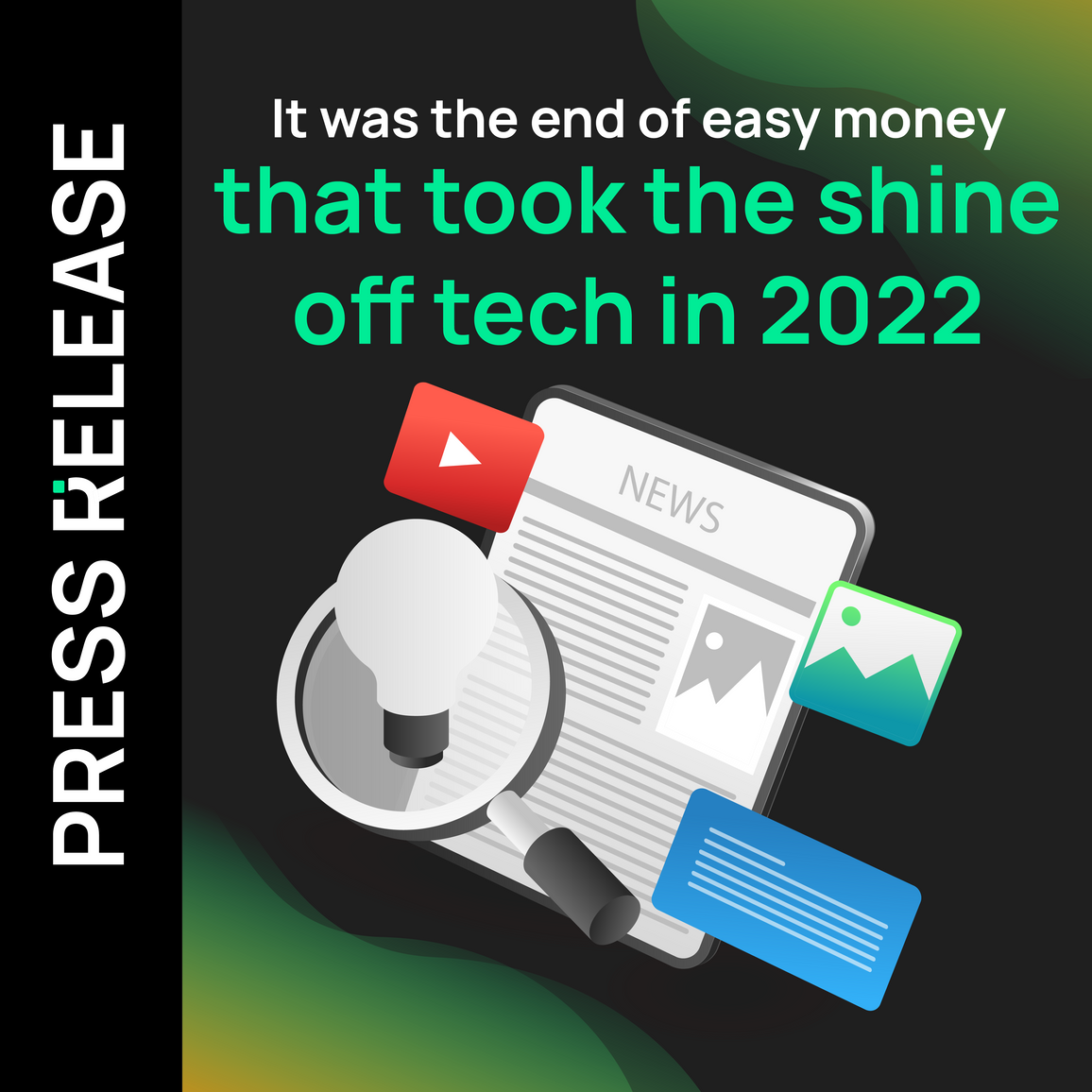It was the end of easy money that took the shine off tech in 2022

The arrest of FTX Founder Sam Bankman-Fried is surely the apotheosis of a hellish year for the tech sector and crypto in particular.
Yet just eighteen months ago, such a fall from grace would have been unimaginable. A pandemic boom yielded heady new valuations, transforming the ‘FANGs’ - the four best-known US tech stocks - into the ‘MANNGMAT’ eight.
Despite the addition of Apple, Nvidia, Microsoft and Tesla to the old gang, MANNGMAT struggled to catch on and the companies’ fortunes soon turned. And badly.
Microsoft’s share price is down 25% since late 2021 and Nvidia’s has fallen by nearly half. ‘Meta’, the new Facebook, is the pick of the bunch with an eye-watering 65% collapse.
European tech stocks haven’t fared much better. From the market’s peak last year, $400 billion has been wiped off its value.
Explaining the tech rout, pundits tend to point to trivial innovations, misguided investment, and a lack of regulation as the culprits. Particularly when it comes to crypto.
They’re not wrong, but from a macro perspective, there’s no doubt that it was the end to loose money that set the house of cards falling.
Look at the data and you’ll see that the Nasdaq only began to really suffer when the Fed began hiking rates in March. And tech, as ever, was one of the first victims of the ensuing bear market.
Things will remain dicey for a while too. Markets are expecting that US rates won’t peak until mid-2023 and will reach 4.75% before they do. That’s a long way from the zero interest-rate policy (ZIRP) of the 2010s.
For European firms, the pain may have only just begun. Inflation in the UK and across the Eurozone is still heading in the wrong direction and the ECB is way behind the hawkish Fed.
Forgive me for painting a gloomy picture, but after a period of naïve optimism and financial malpractice, it’s time for the tech sector to snap back to reality.
I will, however, strike a single positive note. Monetary tightening – as well as being a prerequisite for fighting inflation – has at least had a cleansing effect on markets.
History shows us that turning off the money spigot always helps to expose unviable business models – those firms that survive only through high leverage and by rolling over their debt.
Much of the crypto industry, my sector, was guilty of this and in spades.
Bolstered by stimulus cheques and furlough, retail investors pumped money into flawed products like stablecoins (which were anything but) and unregulated, unscrupulous exchanges like FTX poured deposits into a range of risky ventures.
Fintech is also on its knees. Average deal prices are down by a third and there are now more donkeys than unicorns. Venture capitalists - who ploughed $150 billion into the sector in 2021 - are now putting their hard-won cash anywhere but.
Alongside praying for geopolitical tensions to ease, prices to drop, and interest rates to fall with them, tech leaders must start to learn lessons.
For crypto, the industry needs to wean itself off excessive leverage and end the childish dream of self-regulation. Innovative youngsters are great, but so are wise heads – particularly when it comes to accounting.
Regarding MANNGMAT, poor reformers like Meta must surely have realized that while VR and the metaverse are exciting prospects, they can no longer be the sole focus for growth. Say it quietly but businesses need to make money too.
Regretfully, Meta-esque tech optimism and its less-than-impressive byproducts have led the media class to see exciting developments like Web3 as a gimmick.
This is almost entirely tech’s fault, and we need to get better at communicating the upsides of emerging technologies like blockchain, whether it’s data monetization, information flows, or programmability.
Looking to 2023, things may get worse before they improve. Central banks will complete their tightening cycles and I have no doubt that a few more corporate giants will be exposed as lame ducks.
The death throes of loose policy, therefore, will be both draining and cathartic, pushing us to see the past two years for what they were: a barrage of easy money fueling needless innovations and financial skullduggery.
Let’s be sure not to go back.

